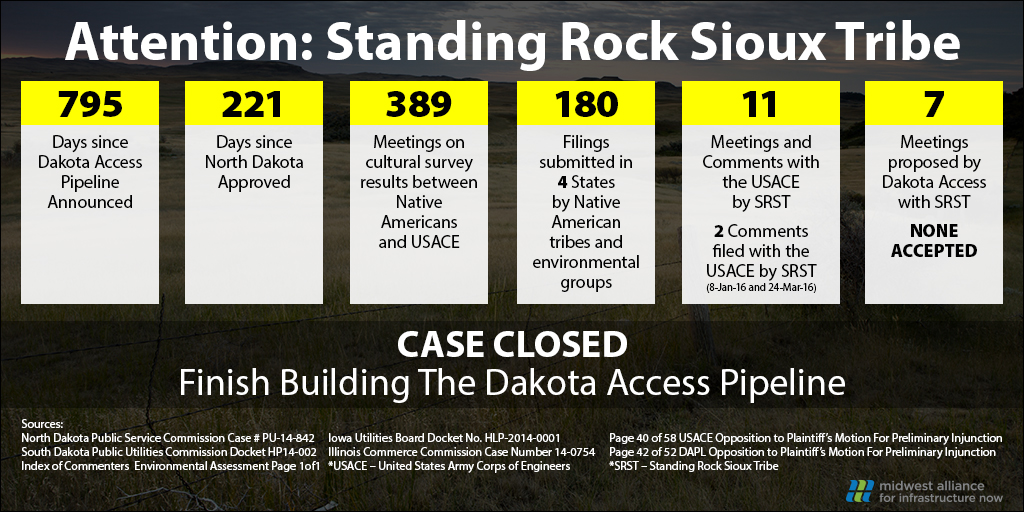The statements of Standing Rock Sioux Tribe (SRST) just don’t add up, and the facts are clear. Despite multiple statements to the contrary, the SRST and their allies have in fact been consulted multiple times by both Dakota Access and the U.S. Army Corps of Engineers prior to construction of the pipeline.

In a lawsuit filed by the radical environmental group EarthJustice on behalf of the SRST claims that, “Neither [Dakota Access] nor the Corps ever consulted with the Tribe…or had invited their participation as the Tribe had repeatedly requested.” The Chairman of SRST, David Archambault, wrote in the New York Times last week that, “permits for the project were approved and construction began without meaningful consultation.”
While this narrative might play well in the media, it could not be further from the truth.
A basic examination of documents provided by the U.S. Army Corps of Engineers and state utility boards, as well as filings by the Corps of Engineers and Dakota Access in the United States District Court for the District of Columbia shows the SRST and environmental allies met with regulators multiple times, and filed over a hundred comments throughout state and federal review periods. Filings also show that Dakota Access made seven attempts to meet with the tribe directly but were rejected every time.
Spreading misinformation and ignoring inconvenient facts is not the proper way to foster meaningful discussion. Based on these revelations, it’s hard not to wonder what other fictional tales the SRST and EarthJustice would like to have us believe.
